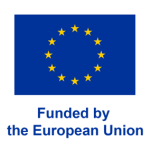The new secure IoT Trust Chain, its concept, procedures, and tools will be validated. Validation will comprise an assessment of operational performance, efficiency of communication exchange between the various stakeholders, the operation of the new security modules, as well as the measurement of security improvements of the protected operations. Three demonstrations will be organized with different IoT use cases, i.e. Consumer, Energy, and Automotive.
Smart home
Consumer use case
The Smart Home site of CERTH/ITI comprises various smart IoT-based technologies related to Energy and is equipped with a large variety of sensors, actuators, and smart home devices. Although the domain is absolutely security sensitive, the used devices have been deployed without any validation, and their security and reliability were taken for granted.
During the demonstration, we are going to prepare DSPs for a set of devices that will be included in the demonstration and will apply diverse testing methodologies on the components used. We will virtualize a subset of the smart home architecture and redesign it from a security perspective in the digital cybersecurity twin using the verified components. In a further step, new devices will be added to the architecture using the DOSS secure onboarding platform.
As the smart home also operates as a living lab, we will involve the end-users in this demonstration to see what level of involvement and collaboration may be expected from regular consumers, who are not security professionals and need simpler preferably automated solutions.


Prosumer cell
Energy use case
The Prosumer cell, to be used for the pilot, is a live operation, connected to the commercial network, located in Balatonfüred (Hungary). It is an experimental and testing facility primarily used for development as well as for modeling and optimizing the operation of commercial deployments. It is assumed that the architecture already had the necessary level of security protection when launched. However, there is no mechanism in place that would guarantee that subsequent changes and modifications do not open new attack surfaces, and do not deteriorate the initial security level.
In this demonstration, we will use the system to demonstrate how software updates and patches can be automatically tested and validated, how their operation will be modeled in the digital twin, and how new components can be securely integrated into the operating environment following their security assessment. New devices and components will be added to the system using the secure onboarding technology of the project. We will also secure the operating architecture comprising a set of runtime security modules – access control, attack detection, malware detection– and should any threats or attacks be discovered (we will simulate various attack scenarios) security related information will be shared with the other actors of the Supply Trust Chain and if necessary, related DSPs will also be updated.

Automotive
Connected Car use case
The Connected Car demonstration will involve a control station and multiple vehicles, both real ones and simulated platforms. The operations will be performed in a controlled environment at the Tecnalia premises.
The demo will focus on the control station which is the centrepiece of the operation. This unit may issue commands to the vehicles which influence their individual behaviour as well as the interaction of a larger fleet and may also overrule the autonomous actions of the cars. With such an operating power it is of utmost importance to guarantee the cybersecurity of the control station architecture, its highest possible level protection.
The demonstration will model and validate the control station. We will prepare the DSP profile for the key devices and will use these components to “redesign” the architecture. The virtual model of the control station, including some deliberate design errors, will be prepared, and fed into the cybersecurity twin. The security exposure of the operation will be simulated in the cybersecurity twin. Known attack types will be launched and we expect to also generate new ones using the deployed AI capability. The twin shall correct the design and will also elaborate adequate protection measures to avert malicious activities. The resulting design model will be validated against selected standard requirements in the architecture validator.






